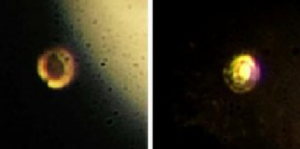
Scientists from Harvard University have got success in creating metallic hydrogen. The new material was formed when scientists squeezed hydrogen so intensely that it changed to attain a metallic form, which according to scientists, might work as highly efficient electricity conductor at room temperatures.
In 1935, physicists Eugene Wigner and Hillard Bell Huntington had proposed a theory hydrogen gas, under extreme pressure, could change its form to attain metallic state. Since then several teams of scientists have been trying to develop metallic hydrogen, which could serve as a superconductor.
Superconductors are currently used in a variety of applications, for example, in magnetic resonance imaging machines and need to be cooled with liquid helium to keep them at extremely low temperatures.
“This is the holy grail of high-pressure physics,” Harvard physicist Isaac Silvera, one of the study’s authors, said.
“It’ the first-ever sample of metallic hydrogen on Earth, so when you’re looking at it, you’re looking at something that’s never existed before.”
In their experiments, Silvera and Ranga Dias (post-doctoral fellow) squeezed hydrogen sample at more than 71.7 million pounds per square inch (32.5 million kg per 6.5 square cm. This is a huge amount of pressure, even greater than the pressure at the center of the Earth.
The pressure was created using synthetic diamonds mounted opposite each other in a diamond anvil cell. A special process was used to treat the diamonds to avoid cracking in them.
“This is just at the point when the diamonds are about to crack,” said David Ceperley, a physics professor at the University of Illinois Urbana-Champaign who was not involved in the research.
“That is why it’s taken so long. Silvera had new ways of shaping the diamonds and polishing them so they wouldn’t break.”
The detailed findings of the study have been published in the journal Science.
